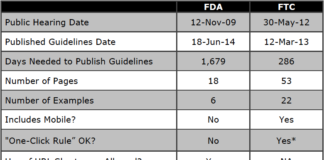The FDA is asking for comments from the public about how it should regulate drug promotion on social network sites (see survey/questionnaire). Several of the questions FDA asks concerns the issue of monitoring, processing, and reporting adverse events that are found on social media sites (see here, here, and here). The pharmaceutical industry is concerned that the floodgates would open if it were responsible for reporting all the adverse events it encounters on social media.
If only the FDA would not insist that manufacturers submit Adverse Event Reports (AERs), then all the industry’s worries would be over. But how would FDA get this information? What about making physicians responsible for submitting all AERs?
That’s exactly what Miguel A. Tovar, journalist and author of Blogaceutics Blog suggested. In a comment to the post “Challenges Handling Adverse Events Found on SM Sites. Survey Says…,” Tovar questioned the responsibility placed upon pharmaceutical companies to report adverse events to the FDA:
“In my opinion,” said Tovar, “it doesn’t make much sense to put responsibility of reporting on the manufacturers. I think adverse events should be evaluated and reported by the physicians who prescribe and/or follow up patients treatments and they should report by filling up an online application connected to an FDA database to which pharmaceutical companies should have access for further analysis and evaluation.
“Reports should include all the relevant information as a description of symptom/s experimented by patient and/or detected by physician, drugs being taken by patient, dosage, etc.”
Currently, only a small percentage of AE reports received by the FDA comes directly from physicians. Let’s look at the data.
According to the FDA, “Reporting of adverse events from the point of care is voluntary in the United States. FDA receives some adverse event and medication error reports directly from health care professionals (such as physicians, pharmacists, nurses and others) and consumers (such as patients, family members, lawyers and others). Healthcare professionals and consumers may also report these events to the products’ manufacturers. If a manufacturer receives an adverse event report, it is required to send the report to FDA as specified by regulations” (see “Adverse Event Reporting System (AERS)“).
AERS Reporting by Healthcare Providers and Consumers by Year
How many adverse events reports does the FDA receive from physicians, consumers, and drug companies? You can find the most up-to-date data on that here. The data (current as of June 30, 2009) are plotted in the chart below:
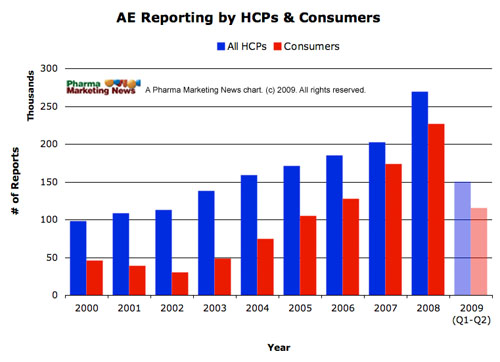
These data describe information about the reporter – the person who submitted the report to FDA, or the person who submitted the report to the manufacturer (who then sent the report to FDA). Physicians and pharmacists are the healthcare providers (HCP) who submit reports to FDA most frequently (in 2008, 57% of HCP reporters were physicians). Other Healthcare Providers include nurses, dentists and others. Consumer refers to any reporter who is not documented in the report as a healthcare provider. This figure includes only data where reporter information is known, and some adverse event reports may contain more than one reporter.
Only a very small fraction of adverse event reports received by the FDA are submitted directly by HCPs and consumers. The following chart shows the number of reports submitted directly to FDA (not submitted through manufacturers) vs. the number submitted by manufacturers (who may have received some portion of them via consumers and/or HCPs). The data (current as of June 30, 2009) can be found on the FDA site (see “Reports Received and Reports Entered into AERS by Year“).
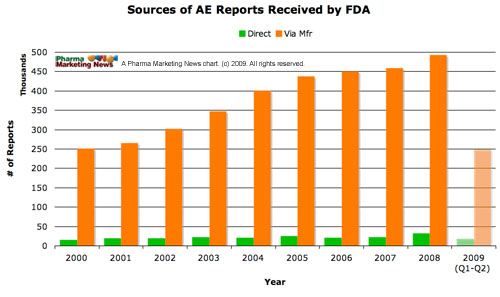
Consumers actually “report” (ie, are reporters of) more adverse events than do physicians (see chart below):
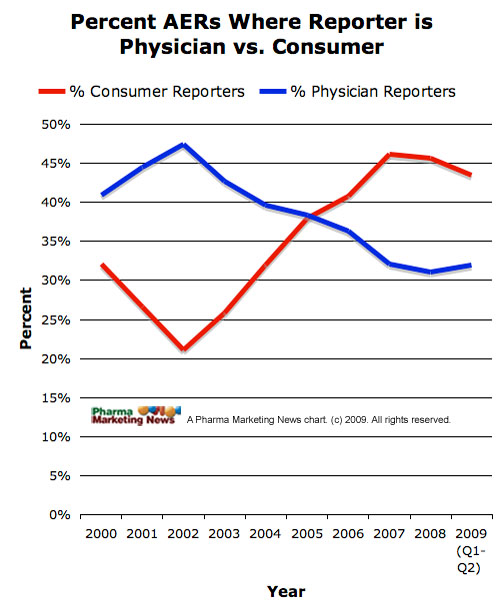
The percent of AEs from consumers (direct or indirect) increased between 2002 and 2007 and has leveled off since then. You would expect a continued increase in the consumer % if social media were a factor AND if drug companies were monitoring social media and honestly reporting AEs found there. Could it be that pharma companies are studiously avoiding monitoring social media for adverse events?
Keep in mind that very few consumer-reported AEs found on social networks meet the requirements for filing an AER (see “Uncertainties Regarding Reporting Adverse Events Found on Social Media Sites: Survey Says…“).


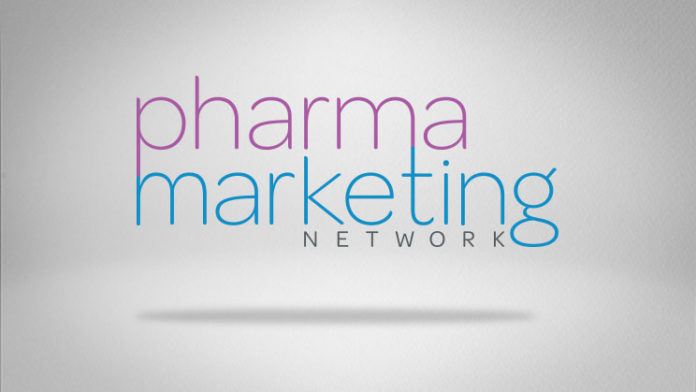






![6 Digital Tools at the Center of Healthcare Digitalization [INFOGRAPHIC]](http://ec2-54-175-84-28.compute-1.amazonaws.com/pharma-mkting.com/wp-content/uploads/2021/04/6DigitalTools_600px-100x70.jpg)




